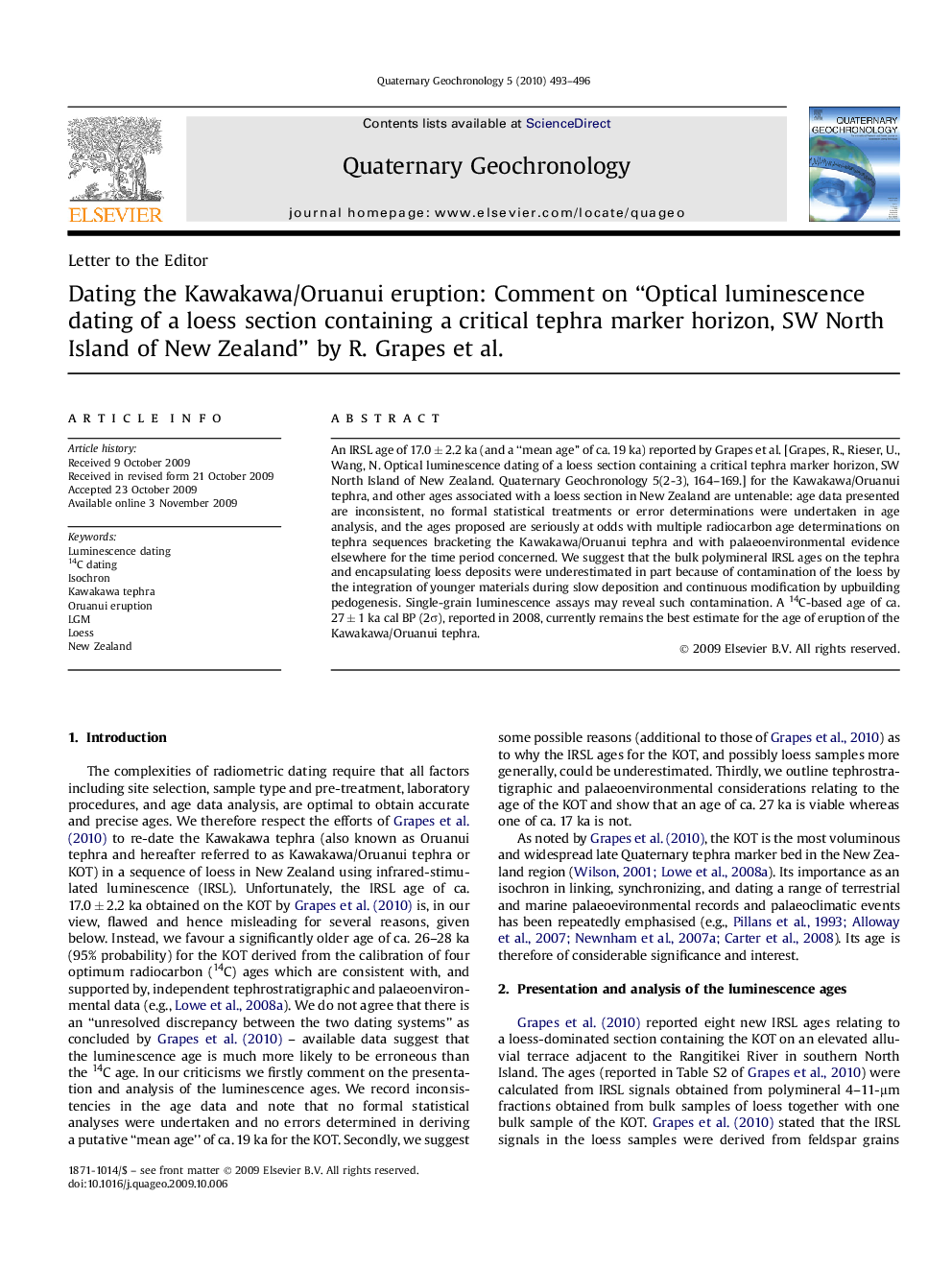| Article ID | Journal | Published Year | Pages | File Type |
|---|---|---|---|---|
| 4725449 | Quaternary Geochronology | 2010 | 4 Pages |
Abstract
An IRSL age of 17.0 ± 2.2 ka (and a “mean age” of ca. 19 ka) reported by Grapes et al. [Grapes, R., Rieser, U., Wang, N. Optical luminescence dating of a loess section containing a critical tephra marker horizon, SW North Island of New Zealand. Quaternary Geochronology 5(2-3), 164-169.] for the Kawakawa/Oruanui tephra, and other ages associated with a loess section in New Zealand are untenable: age data presented are inconsistent, no formal statistical treatments or error determinations were undertaken in age analysis, and the ages proposed are seriously at odds with multiple radiocarbon age determinations on tephra sequences bracketing the Kawakawa/Oruanui tephra and with palaeoenvironmental evidence elsewhere for the time period concerned. We suggest that the bulk polymineral IRSL ages on the tephra and encapsulating loess deposits were underestimated in part because of contamination of the loess by the integration of younger materials during slow deposition and continuous modification by upbuilding pedogenesis. Single-grain luminescence assays may reveal such contamination. A 14C-based age of ca. 27 ± 1 ka cal BP (2Ï), reported in 2008, currently remains the best estimate for the age of eruption of the Kawakawa/Oruanui tephra.
Related Topics
Physical Sciences and Engineering
Earth and Planetary Sciences
Geochemistry and Petrology
Authors
David J. Lowe, C.J.N. Wilson, R.M. Newnham, A.G. Hogg,
